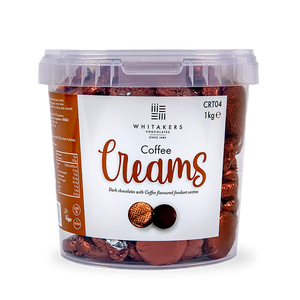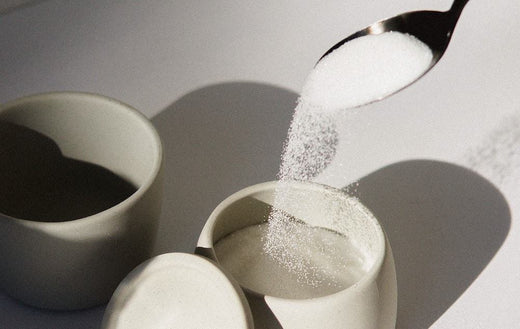We all relish a good chocolate bar, don't we? It's our comfort food on a blue day, our celebration on a red-letter day, and a guilty pleasure on any given day.
But have you ever paused before unwrapping that luscious bar and wondered, "Just how much sugar is in this delightful treat?"
It's an important question to ask, especially in a world where we're becoming increasingly aware of the impact of our dietary choices on our health.
The sugar content can vary widely from bar to bar, with everything from the type of chocolate to the brand and the size of the bar playing a role.
In this post, we're going to look into the sweet truth about the sugar content in different types of chocolate bars.
We'll explore why sugar is added to chocolate, how to understand sugar content on nutrition labels, and how to make informed choices about which chocolate bars to enjoy.
Let's unwrap the facts together!
How Much Sugar is in a Chocolate Bar?
The sugar content in a chocolate bar can vary significantly depending on the type of chocolate and the brand.
As a rough guide:
| Type of Chocolate | Average Bar Size (g) | Sugar per Bar (g) | Sugar per 100g (g) |
|---|---|---|---|
| Milk Chocolate | 45 | 25 | 55 |
| Dark Chocolate (70-85% Cocoa) | 45 | 10-12 | 22-26 |
| White Chocolate | 45 | 27 | 60 |
NOTE - In this table, the sugar content of each type of chocolate is represented both for an average-sized bar and per 100 grams.
To explain the chart in words:
- An average-sized bar of milk chocolate (around 45g) contains about 25 grams of sugar. This equates to roughly 55 grams of sugar per 100 grams.
- An average-sized bar of dark chocolate (around 45g), specifically those with 70-85% cocoa, contains about 10-12 grams of sugar. This equates to roughly 22-26 grams of sugar per 100 grams.
- White chocolate tends to have the highest sugar content, with an average-sized bar (around 45g) containing roughly 27 grams of sugar. This equates to approximately 60 grams of sugar per 100 grams.
Remember, these are approximate values, and the actual sugar content can vary widely between brands and specific products.
Always check the nutritional information on the packaging for the most accurate information.
Related Post: How Does Chocolate Raise Blood Sugar Levels?
What Type of Chocolate Has the Least Sugar?
The type of chocolate that generally contains the least amount of sugar is dark chocolate, specifically those varieties with a high percentage of cocoa solids.
Dark chocolate labelled as 70%, 85%, or even up to 99% cocoa tends to have less sugar than milk or white chocolate.
This is because a greater proportion of the chocolate bar is made up of cocoa solids, leaving less room for added sugars.
For example, a bar of 85% cocoa dark chocolate may contain as little as 10-15 grams of sugar per 100 grams, compared to milk chocolate which could contain up to 50 grams or more per 100 grams.
However, it's important to remember that sugar content can vary between brands and specific products.
Always check the nutritional label on the packaging for the most accurate information.
Also, while dark chocolate contains less sugar, it is also stronger in flavour and may take some getting used to if you usually eat milk or white chocolate.
But it's worth trying, as it's not only lower in sugar but also higher in beneficial nutrients and antioxidants.
(Click here if you want to read about: What Percentage is Semi-Sweet Chocolate?)
What Are the Main Ingredients in Chocolate Bars?
The main ingredients in a chocolate bar can vary depending on the type of chocolate but typically include the following:
-
Cocoa Solids: This is the main component of chocolate, derived from cocoa beans. The percentage of cocoa solids in a chocolate bar determines whether it is classified as dark, milk, or white chocolate. Dark chocolate has the highest percentage, typically between 70-99%, while milk chocolate usually contains between 20-40%, and white chocolate contains minimal to no cocoa solids.
-
Sugar: Sugar is added to chocolate to balance the bitterness of the cocoa. The amount varies greatly, with dark chocolate usually containing the least, and white chocolate the most.
-
Milk: Milk is an essential ingredient in milk chocolate, giving it a creamier texture and lighter colour than dark chocolate. It's also found in white chocolate, but is absent in most dark chocolates.
-
Cocoa Butter: This is the fat component of the cocoa bean and is used in all types of chocolate to give a smooth, melt-in-your-mouth texture. In white chocolate, cocoa butter is the primary source of the 'chocolate' flavour, as it contains minimal to no cocoa solids.
-
Lecithin: Usually derived from soy (soy lecithin), this ingredient is an emulsifier that helps the other ingredients blend more effectively and maintains the smoothness of the chocolate.
-
Vanilla: This is often added to enhance the flavour of chocolate, although it's more common in milk and white chocolate than in dark.
-
Additional Flavours and Additives: Many chocolate bars also contain other ingredients like nuts, dried fruit, crisped rice, caramel, or other flavourings. Some might also contain preservatives, though high-quality chocolates usually avoid these.
When choosing a chocolate bar, it's always a good idea to check the ingredients list.
The fewer the ingredients, the better, as this usually means the chocolate is of higher quality and contains fewer additives.
(Click here if you want to read: How Much Cocoa is there in Milk Chocolate?)
How Much Sugar is it Safe to Eat Each Day?
According to the NHS and World Health Organization, it's recommended that adults should not be consuming more than 30 grams of 'free sugars' a day, which equates to approximately 7 teaspoons.
Free sugars are those added to food or drinks and include sugars found naturally in honey, syrups, and fruit juices.
Children aged 7 to 10 should have no more than 24 grams of free sugars a day, and children aged 4 to 6 should have no more than 19 grams.
There is no guideline set as a limit for young children under the age of 4, but it's recommended they avoid sugar-sweetened drinks and food with added sugars.
It's important to note that these are maximum limits, not targets.
Consuming less than this amount is perfectly safe and may be healthier in the long run.
Also, remember that sugar can add up quickly throughout the day across various foods and drinks, so it's worth checking labels to keep an eye on your intake.
(You might also find this post interesting: What is Fairtrade Chocolate?)
Where Can You Buy High-Quality Chocolate Bars?
For anyone seeking delectable, high-quality chocolate, look no further than Whitaker's Chocolates.
With a rich heritage and a commitment to exceptional craftsmanship, we’ve been delighting chocolate lovers for generations.
As a family-run business, Whitaker's brings years of expertise to each chocolate it produces, ensuring every bite is a testament to its dedication to quality.
This commitment extends beyond taste to sustainability and ethical sourcing.
We proudly use Fairtrade cocoa across our entire range, which not only ensures a fair deal for cocoa farmers in developing countries but also contributes to sustainable farming practices.
Taking pride in the ingredients we use, Whitaker's chocolates are crafted from only the finest, natural ingredients.
There's no room for anything nasty here.
Unlike some other brands, you won't find artificial additives or preservatives in Whitaker's chocolates. Instead, you'll find pure, delicious ingredients that create a memorable tasting experience.
Moreover, we’re dedicated to inclusivity, creating a variety of chocolate delights to cater to different dietary requirements.
Many of our offerings are gluten-free and palm oil-free, making them a great choice for those with specific dietary needs.
We also have a range of products suitable for vegetarians and vegans, so everyone can enjoy the rich, mouth-watering taste of their chocolates.
In short, Whitaker's is not just a chocolate brand - it's a promise of quality, sustainability, and an absolute delight.
When you choose Whitaker's, you're not just buying a chocolate bar; you're choosing a product that stands for responsibility, inclusivity, and, above all, a love for great-tasting chocolate!
Here are some of our firm customers favourite chocolate bars:
- Signature dark chocolate bar, sometimes the most simple is the best!
- Cool and minty, dark chocolate and peppermint chocolate bars (with crunchy honeycomb pieces too!)
- Knock your socks off with our fiery combo of dark chocolate bar infused with orange and chilli
- A zest fest - lime and sea salt infused in rich dark chocolate, it's the ultimate bar!
Final Notes On How Much Sugar There Is In a Chocolate Bar
The sugar content in a chocolate bar can vary greatly, depending primarily on the type of chocolate and the brand.
Dark chocolate, particularly those with a high cocoa content, generally contains the least amount of sugar, while milk and white chocolates usually contain more.
An average-sized milk chocolate bar (around 45g) might contain about 25 grams of sugar, while a similar-sized dark chocolate bar (70-85% cocoa) could have around 10-12 grams of sugar.
White chocolate often has the highest sugar content.
While enjoying a chocolate bar as an occasional treat is perfectly fine, balance and moderation are key.
Opt for high-quality chocolates with fewer additives, and consider portion control if you are watching your sugar intake. After all, chocolate should be a joy, not a guilt trip!


















